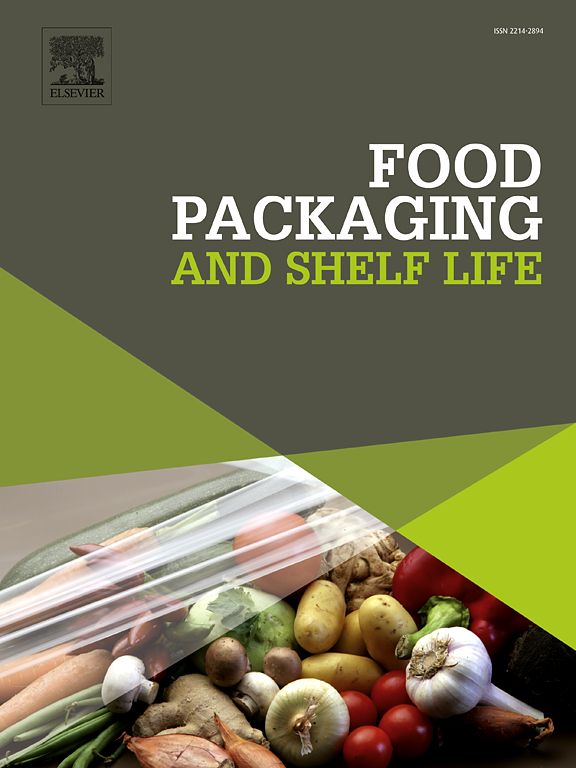Evaluating the influence of carbon quantum dots on starch-based bioplastics: Toward potential food packaging applications
IF 10.6
1区 农林科学
Q1 FOOD SCIENCE & TECHNOLOGY
引用次数: 0
Abstract
Developing biodegradable food packaging films is crucial for reducing dependence on petroleum-based plastics. In this study, nitrogen-doped carbon quantum dots (CDs) were synthesized from citric acid and ethylenediamine via hydrothermal treatment and incorporated into sago starch films at concentrations of 0.5 %, 1 %, 3 %, and 4 % w/w of total solids using a solution casting method. The effects of CDs on structural, thermal, antioxidant, optical, and physicochemical properties were systematically investigated. CD addition enhanced the UV-shielding ability of the films. At 4 % CD content, UV transmittance decreased by 56.4 % (UVA), 66.7 % (UVB), and 73.9 % (UVC) relative to the control film. CD incorporation also reduced moisture content from 31.25 % to 22.95 %, and increased the water contact angle from 37.1° to 67.7° at 3 % loading, indicating improved surface hydrophobicity. Structural characterization (FTIR, XRD) and imaging (SEM, TEM, AFM) confirmed successful synthesis, dispersion, and crystallinity improvement, although aggregation occurred at 4 %. The films also showed improved antioxidant activity and thermal stability. Overall, the integration of CDs at appropriate concentrations significantly enhanced the barrier, surface, and optical performance of sago starch films, demonstrating their potential as cost-effective, environmentally friendly packaging materials with added functionality.
评价碳量子点对淀粉基生物塑料的影响:面向潜在的食品包装应用
开发可生物降解的食品包装薄膜对于减少对石油基塑料的依赖至关重要。本研究以柠檬酸和乙二胺为原料,通过水热法合成了氮掺杂碳量子点(CDs),并采用溶液浇注法将其分别以0.5 %、1 %、3 %和4 % w/w的总固体浓度掺入西米淀粉薄膜中。系统地研究了CDs对结构、热、抗氧化、光学和物理化学性质的影响。CD的加入增强了膜的防紫外线能力。CD含量为4 %时,与对照膜相比,紫外透过率降低了56.4% % (UVA)、66.7 % (UVB)和73.9 % (UVC)。在3 %的负载下,CD的掺入也使水含量从31.25 %降低到22.95 %,水接触角从37.1°增加到67.7°,表明表面疏水性得到改善。结构表征(FTIR, XRD)和成像(SEM, TEM, AFM)证实了成功的合成,分散性和结晶度的改善,尽管在4 %发生了聚集。膜的抗氧化活性和热稳定性也有所提高。总的来说,适当浓度的CDs集成显著增强了西米淀粉膜的屏障、表面和光学性能,显示了它们作为具有附加功能的成本效益、环保包装材料的潜力。
本文章由计算机程序翻译,如有差异,请以英文原文为准。
求助全文
约1分钟内获得全文
求助全文
来源期刊

Food Packaging and Shelf Life
Agricultural and Biological Sciences-Food Science
CiteScore
14.00
自引率
8.80%
发文量
214
审稿时长
70 days
期刊介绍:
Food packaging is crucial for preserving food integrity throughout the distribution chain. It safeguards against contamination by physical, chemical, and biological agents, ensuring the safety and quality of processed foods. The evolution of novel food packaging, including modified atmosphere and active packaging, has extended shelf life, enhancing convenience for consumers. Shelf life, the duration a perishable item remains suitable for sale, use, or consumption, is intricately linked with food packaging, emphasizing its role in maintaining product quality and safety.
 求助内容:
求助内容: 应助结果提醒方式:
应助结果提醒方式:


